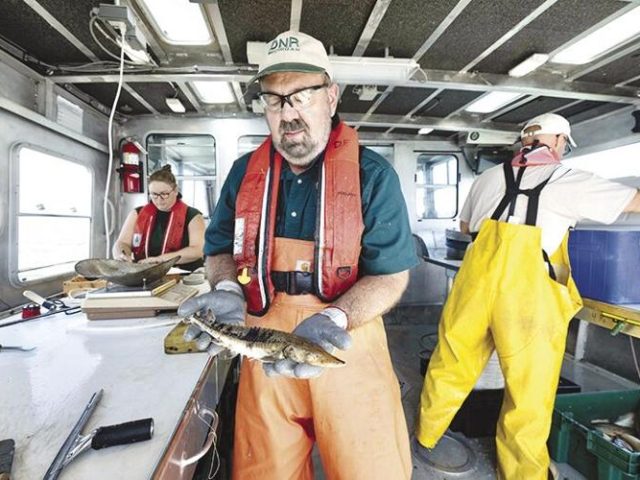Results of DNR’s 2024 Great Lakes Fisheries Survey

The Michigan Department of Natural Resources (DNR) conducts extensive surveys of Great Lakes fisheries every year, from April to November, to gather data on fish populations, health, and the impact of invasive species. This data helps inform fisheries management decisions such as stocking levels and catch limits. Here’s a summary of the key findings from the 2024 surveys:
- Lake Superior (Marquette Fisheries Research Station):
- The surveys showed slight increases in adult lake trout populations and a mixed trend in juvenile lake trout recruitment. Stable populations overall were noted. The surveys also assessed lake trout around Isle Royale and in deep waters, including a remote reef 40 miles offshore.
- Lake Michigan (Charlevoix Fisheries Research Station):
- The DNR participated in a spring gill net survey and a lakewide acoustic survey, focusing on species like lake trout and alewife. The spring survey, which covered multiple ports, provided comprehensive data on fish populations. The acoustic survey found stable prey fish densities despite challenges posed by coldwater upwelling. A bottom trawl survey in the fall assessed nearshore fish communities and invasive species.
- Lake Huron (Alpena Fisheries Research Station):
- Surveys in Lake Huron showed consistent adult lake trout catch rates. A significant finding was the high abundance of young walleye in Saginaw Bay. The RV Tanner also focused on restoring cisco populations, which are important to the ecosystem.
- St. Clair-Detroit River System (Lake St. Clair Fisheries Research Station):
- Tagging studies on species like northern pike and smallmouth bass revealed small, distinct subpopulations of bass in Lake St. Clair. The DNR also tracked the recruitment of lake sturgeon in the St. Clair River, showing ongoing success in restoring these fish. A bottom trawl survey in Lake Erie showed strong walleye reproduction.
These surveys contribute crucial data for long-term fisheries management and collaborative research with universities and other agencies.
Read the full story on Iosco County News-Herald.
